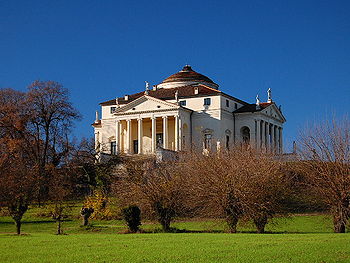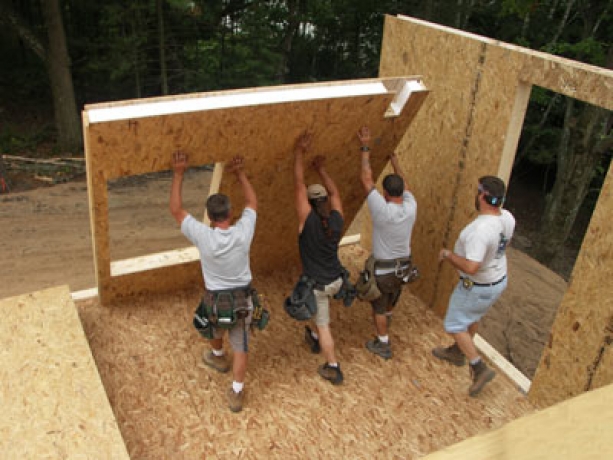Each architect find’s inspiration in different places and from different things. Sometimes that inspiration is easy to spot. Take, for instance, this bank building in Grass Valley, California. It looks very much a civic building to our North American eyes. It’s got the columns and the dome. It has to be an important civic building, right?
It probably was an important civic building when it was built (late 1800’s). Banks had a lot of importance in old mining towns. But, if you aren’t an architect, you may not know that this building is clearly based on a country villa, the Villa Rotunda by Palladio, a house I’ve posted about before.
You can clearly see how the Grass Valley architect has used the Villa Rotunda, built in Italy in the 16th century, as a model. The bank is smaller, and the portico has been flattened, but the resemblance can’t be denied. The architect didn’t copy the building, but rather took inspiration from the forms. The Palladio building was built at the top of a hill with views in all directions, and so has a portico on each face with a different view. The Grass Valley building, while on a hill, is in the center of town, on a corner, with one street being more important than the other. The important street gets the portico. The way the block of the building and the dome are handled are also similar in both buildings.

Architects are inspired and learn from existing buildings by other architects. We take the forms and filter it through our own experience, the project requirements, and – often – the altered construction techniques, to make new forms with new uses in different times. It’s one of the many things that an architect does.





